In the world of barbecue, where smoke and fire transforms simple ingredients into extraordinary meals, the Reverse Seared Smoked Pork Loin stands out for its sophisticated simplicity. The pork loin is first butterflied, spread with fresh herbs and garlic inside of the loin, then rolled up and tied tight. It then undergoes a unique cooking process that imparts a rich smokiness while ensuring a perfect, juicy interior.
A pork loin is a fairly large cut of meat. Try to buy a roast the right size for the meal that you are planning. Smoked pork loin is delicious, but it just does not reheat very well, so only buy what you need.
For this recipe, I needed a 2.5 lb pork loin, enough to feed four people. But the smallest roast that I was able to find was 4.25 pounds. So, I cut it in half and used the other half to make Canadian Bacon. You can store the uncooked portion of pork loin in vacuum sealed bags in the refrigerator for 3 days.
Join us as we unravel the intricacies of the reverse-searing method while making a perfectly smoked pork loin. Let's dive into the process of transforming the pork loin into a tender and flavor-packed centerpiece for your table.

This is a great dinner to serve for the holidays or a special occasion.
This easy recipe was inspired by my other recipes for Pork Belly Burnt Ends, Pork Tenderloin With Chili Honey Glaze, Pork Belly Tacos and Double Cut Pork Chops.
Ingredients
- Boneless pork loin
- Fresh rosemary
- Fresh thyme
- Fresh parsley
- Garlic cloves
- Kosher salt
- Black pepper
- Olive oil
See recipe card for quantities.
Instructions
Butterfly the Roast
The first thing to do is trim the roast. Leave the fat cap intact but remove any silver skin. Most pork loin roasts are pretty lean do not have any excess fat that needs to be removed.
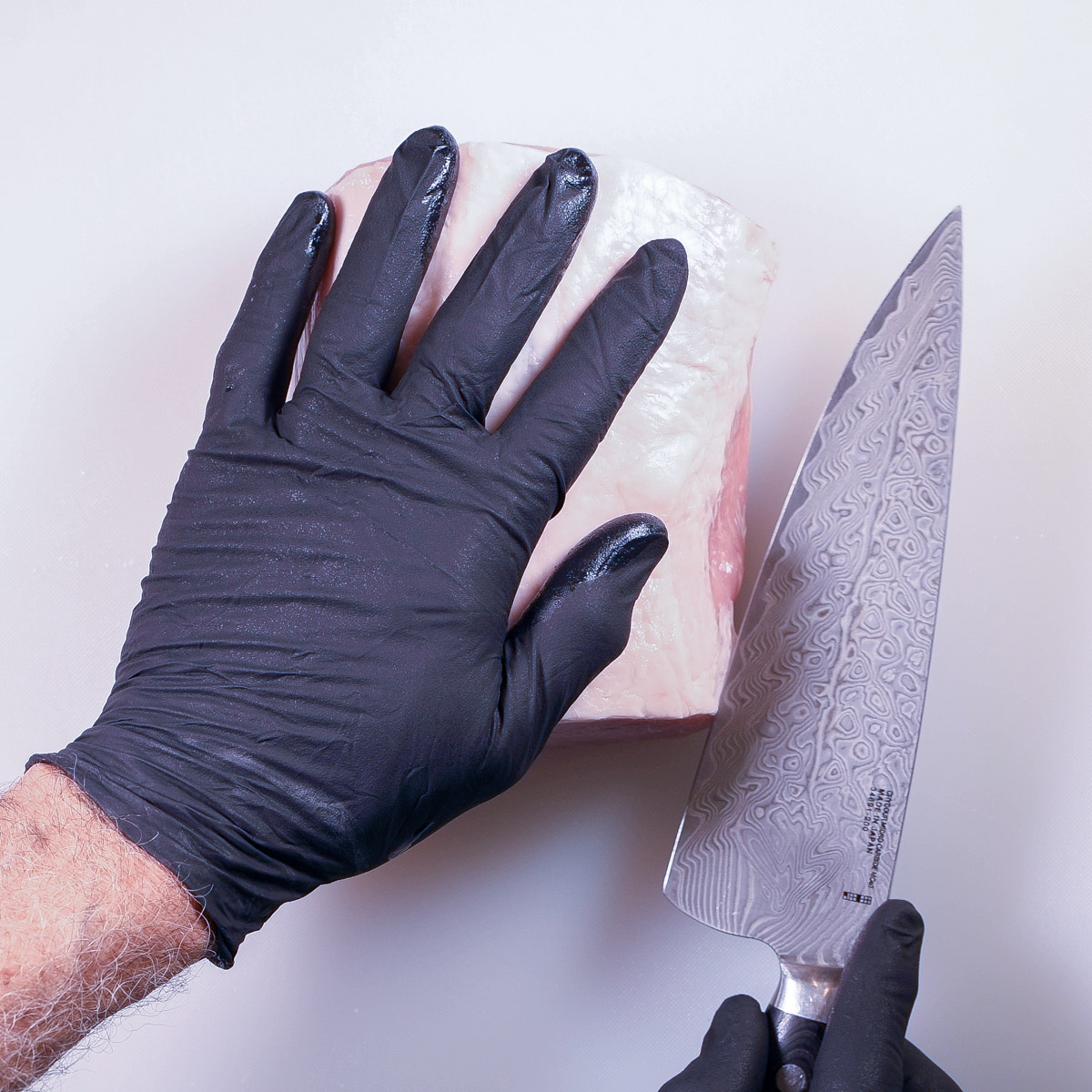
Lay the roast on a cutting board with one end facing you with the fat cap on the top. Use a sharp knife to make a cut starting on one side about ¾" to 1" from the bottom.
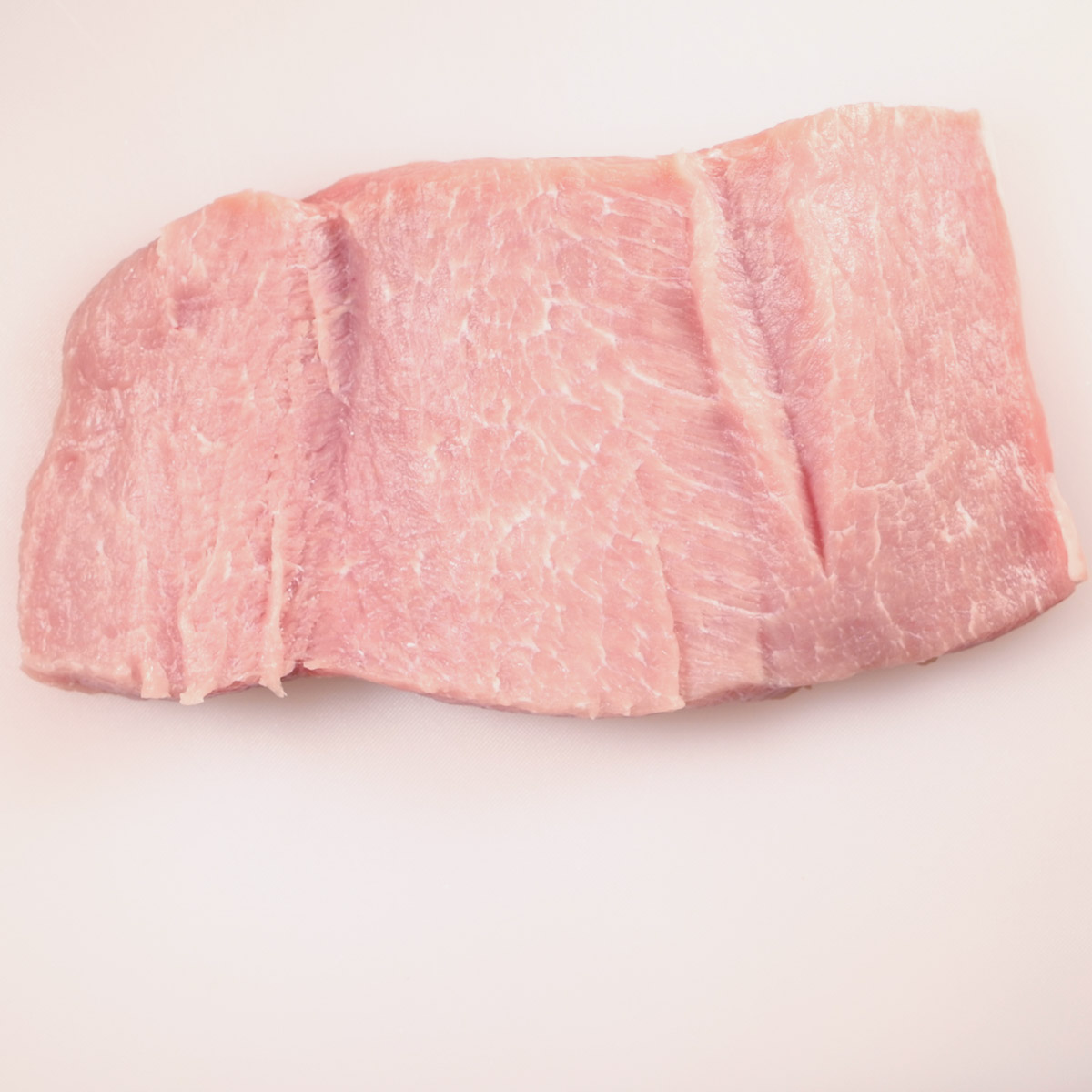
Stop the cut ¾" from the other side. Flip the roast open and make another cut just like for first. Lay the roast out flat. The goal is to flatten out the roast with fairly even thickness throughout.
Make an Herb Mixture and Spread it on the Roast
Smoked pork loin is good, but can be a little boring. It needs the some help from a mixture of fresh herbs and garlic rolled up inside of the loin. Begin by patting it dry with paper towels.
In a small bowl, combine minced rosemary, thyme, parsley, garlic, salt, pepper, and olive oil. Give it a good stir to blend the flavors. Next, place the butterflied pork roast fat side down on a cutting board. Spread the herb mixture evenly over the entire surface of the opened-up roast. Roll the roast up tightly and secure it with butcher twine. Rub the tied-up roast with olive oil and season with the remaining salt and pepper.
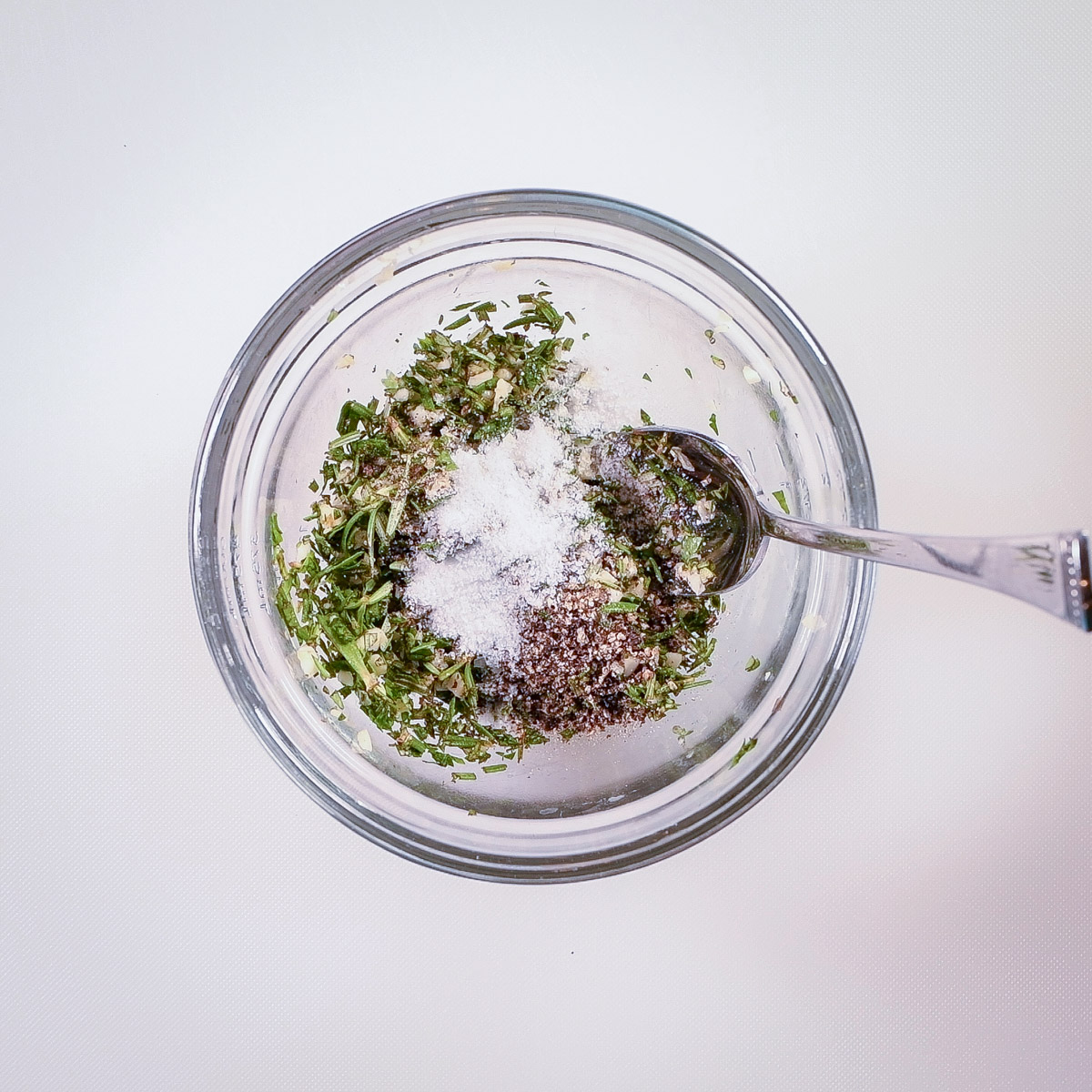
Mince the herbs and mix them with olive oil to form a paste. A little olive oil goes a long way, use just enough to form a paste. Any extra will just leak out once the roast is rolled back up.
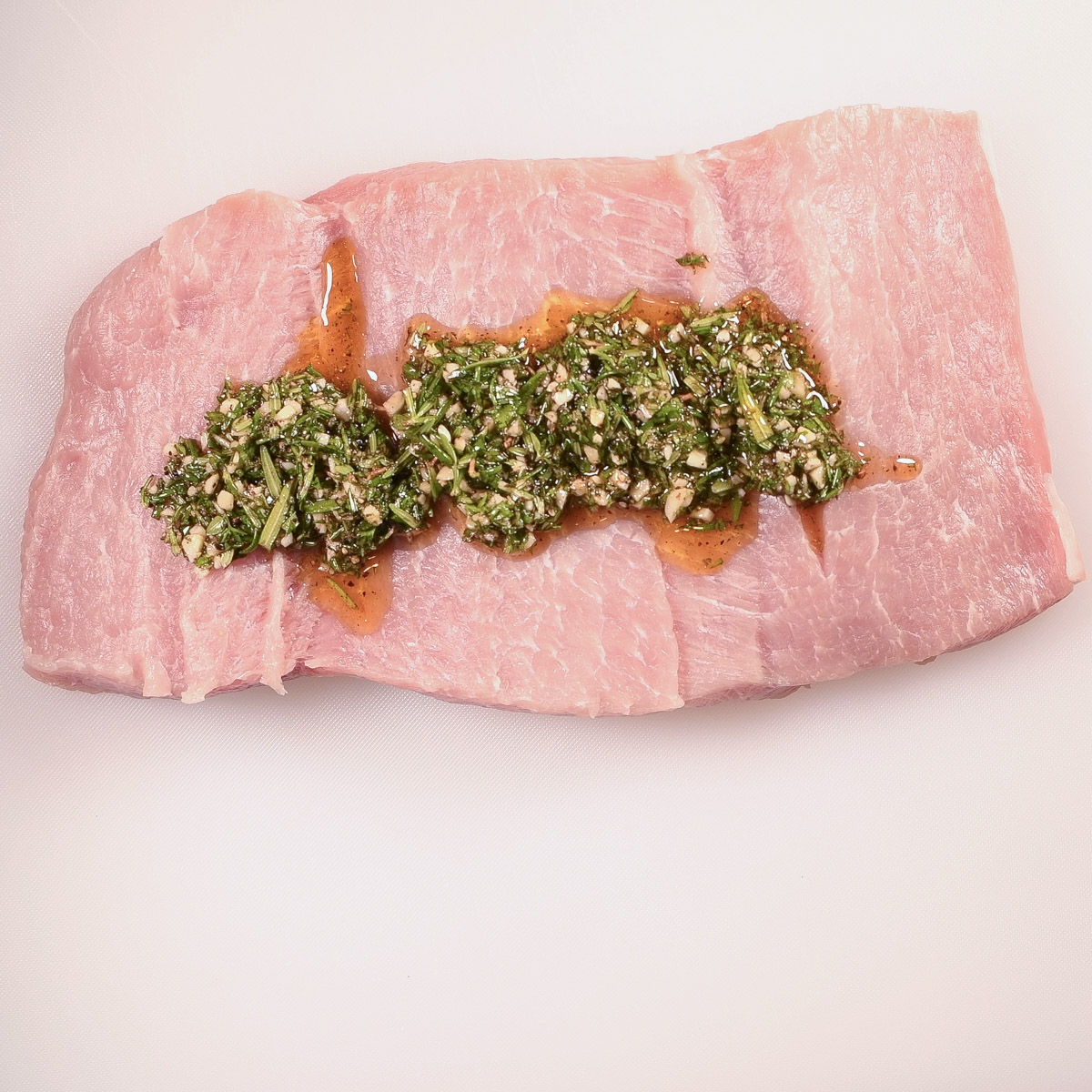
Add the garlic and herb stuffing mixture to the center of the butterflied pork loin. This enhances the flavors and juiciness of the pork tenderloin when it is cooked.
Roll Up the Roast and Tie it Tight

Use a spatula to spread the herb mixture across the center of the pork loin. This is where a lot of flavor comes from so do a good job spreading it evenly.
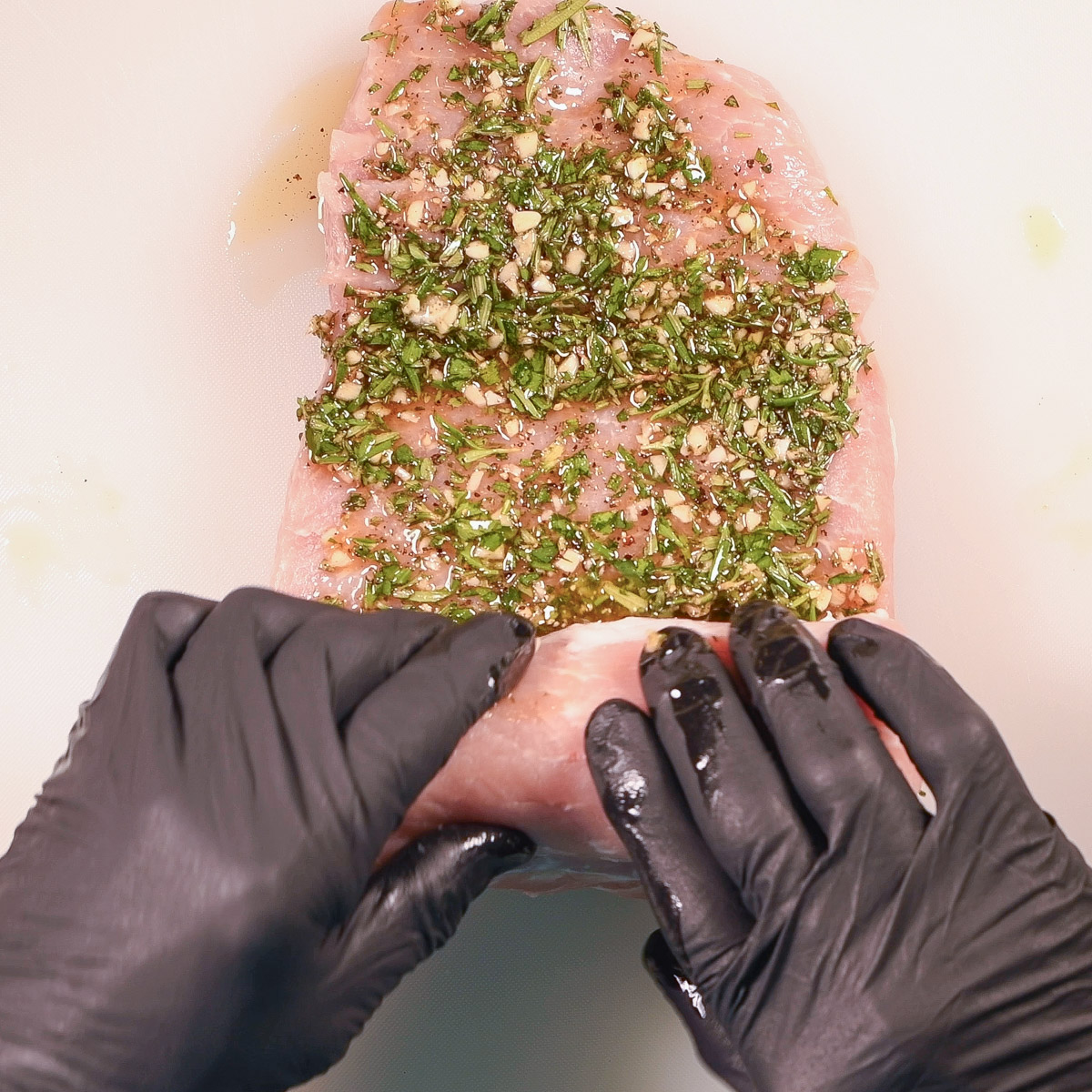
Turn the roast 90˚ so the fat side is away from you. Roll up the roast with the herbs inside.
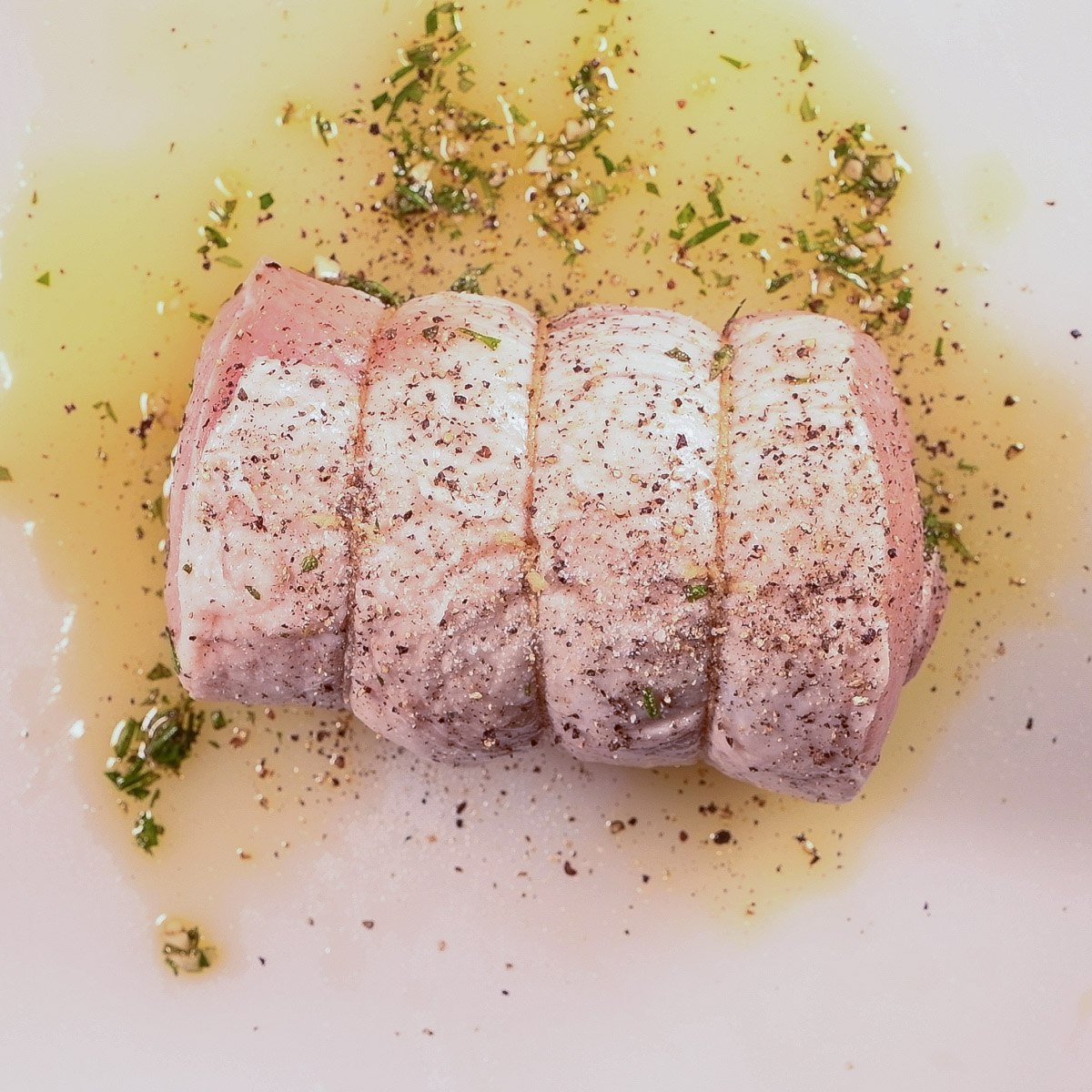
Tie the roast with butcher's twine. Trim off the excess string then rub the outside of the loin with a little olive oil and season with salt and pepper. Insert a temperature probe into the thickest part of the tenderloin before smoking.

Place the tied pork loin in the preheated smoker, directly on the grill grates, with the seam on the bottom. The fat side should be on top. There is no need to rotate the tenderloin during the smoking process.
Smoke It First Then Reverse Sear It
Smoke the roast over indirect heat until the internal temperature reaches 138˚ - 140˚F, measured on an instant-read thermometer. Watch the internal temperature carefully and do not overcook the roast or it will be dry. Remember, it will continue to cook while it is resting. The target final internal temperature is 145°F for medium-rare doneness. It will take about 45 minutes until the internal temperature reaches 140°F.
Remove the roast, cover it with loosely with aluminum foil, and let it rest for 12 - 15 minutes. The rest is needed to allow the juices to be reabsorbed.
While the roast is resting, heat vegetable oil in a skillet pan over medium-high heat. After the roast has rested, place it in the skillet fat side down and sear until browned on all sides, about 8 minutes.
For the best results, ensure the internal temperature reaches 145°F for medium-rare doneness. Monitor the searing process and adjust the timing as needed to achieve the perfect sear.
Cut and Serve
For optimal flavor and tenderness, slice the tenderloin into ⅜" to ½" slices and serve.
Variations
There are many different ways to cook pork loin, but this is the best way that I have found. Pork can be dry and this recipe does a lot to prevent that with the reverse sear cooking technique.
A smoked pork tenderloin is entirely different from a smoked pork loin. A tenderloin is about 2" in diameter and is too small to be butterflied. A pork loin is about 6 - 7" in diameter really needs to be butterflied.
In this recipe, the pork loin is first smoked, then rested and then reverse seared and served. In the video, the pork loin is first seared, then smoked, then rested and served. Both methods work, but the reverse seared method results in a somewhat juicier pork loin. In both methods, the rest time is critical. Cut it too soon and the juice will run out and the meat will be dry.
Equipment
The pork loin in this recipe was cooked in Kamado Joe over indirect heat. A Big Green Egg, other ceramic cooker, pellet grill or kettle style charcoal grill setup for indirect heat would also work well.
Storage
Leftovers can usually be stored in an airtight container in the refrigerator for up to 3 days. But, keeping leftover pork loin is not a good idea. It is always dry and disappointing. I have not found a way to reheat leftover pork loin and keep it juicy. If you know of one, please let me know.
Top Tip
Use a temperature control device, like a Fireboard, to control the internal temperature of your smoker. Watch my video on Why You Need a Fireboard to learn more.
Notes
There was no wood used in smoking this pork loin. Cooking with lump charcoal was more than enough to provide the wood-fired flavor.
Also, a pork loin is not cooked low and slow like a lot of beef roasts. The reason is the lack of connective tissue in a pork loin. Many beef roasts need a long time cooking low and slow to breakdown connective tissue and make the roast tender. That isn't an issue with a pork loin.
With its smoky exterior and juicy interior, each bite is an invitation to appreciate the nuances of the reverse-seared cooking process. So, set your table, gather your family and friends, and serve up some smoked stuffed pork loin. Enjoy.
Related
Looking for other great recipes like this? Try these:
Pairing
These are my favorite dishes to serve with this recipe.
📖 Recipe
Reverse Seared Smoked Pork Loin Recipe
Ingredients
Equipment
Method
- Setup for indirect heat and preheat to 300˚F. Combine minced rosemary, thyme, parsley, garlic, ½ teaspoon salt, ½ teaspoon pepper and olive oil in a small bowl. Stir to combine.
- Place the roast fat side up on a cutting board with one end facing you. Starting at the right side about 1" from the bottom, use a sharp knife to cut horizontally through the roast, stopping about ¾" from the left most edge. Open the roast up by flipping the top part of the roast to the left. Make a second cut similar to the first, again stopping ¾" from the edge. Press the roast flat.
- Spread the herb mixture over the entire surface of the opened up roast. Turn the roast 90˚ with the fat side facing away. Roll the roast up tight and stop with the seam on the bottom. Use butcher twine to tie up the roast.
- Rub the tied up roast with olive oil and season with remaining salt and pepper. Move the roast to the grill and cook over indirect heat until the roast reaches an internal temperature of 138° - 140˚F. Remove the roast, loosely cover with foil and let it rest 15 minutes.
- Heat vegetable oil in a skillet pan over medium-high heat. Place the roast in the skillet fat side down and sear until browned on all sides, about 8 minutes.
- Cut into ¼ - ½" slices and serve.

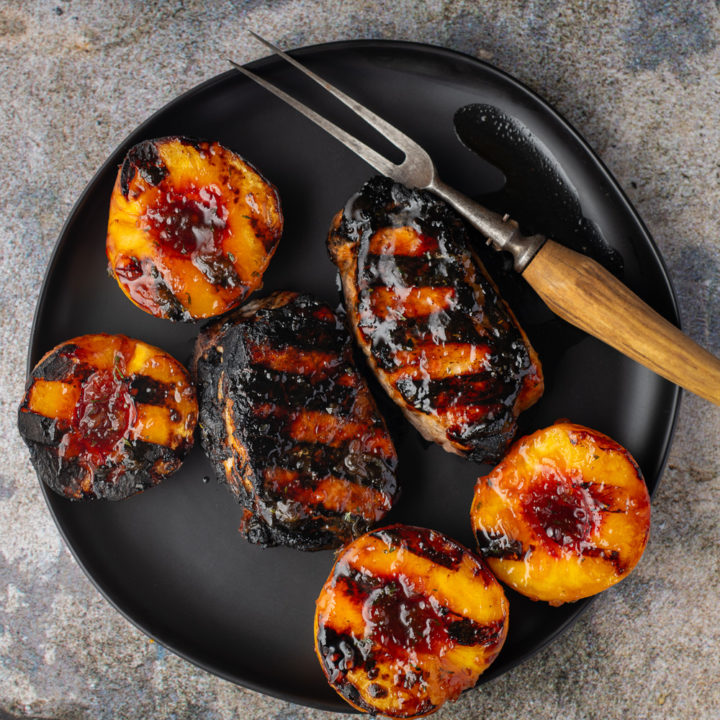
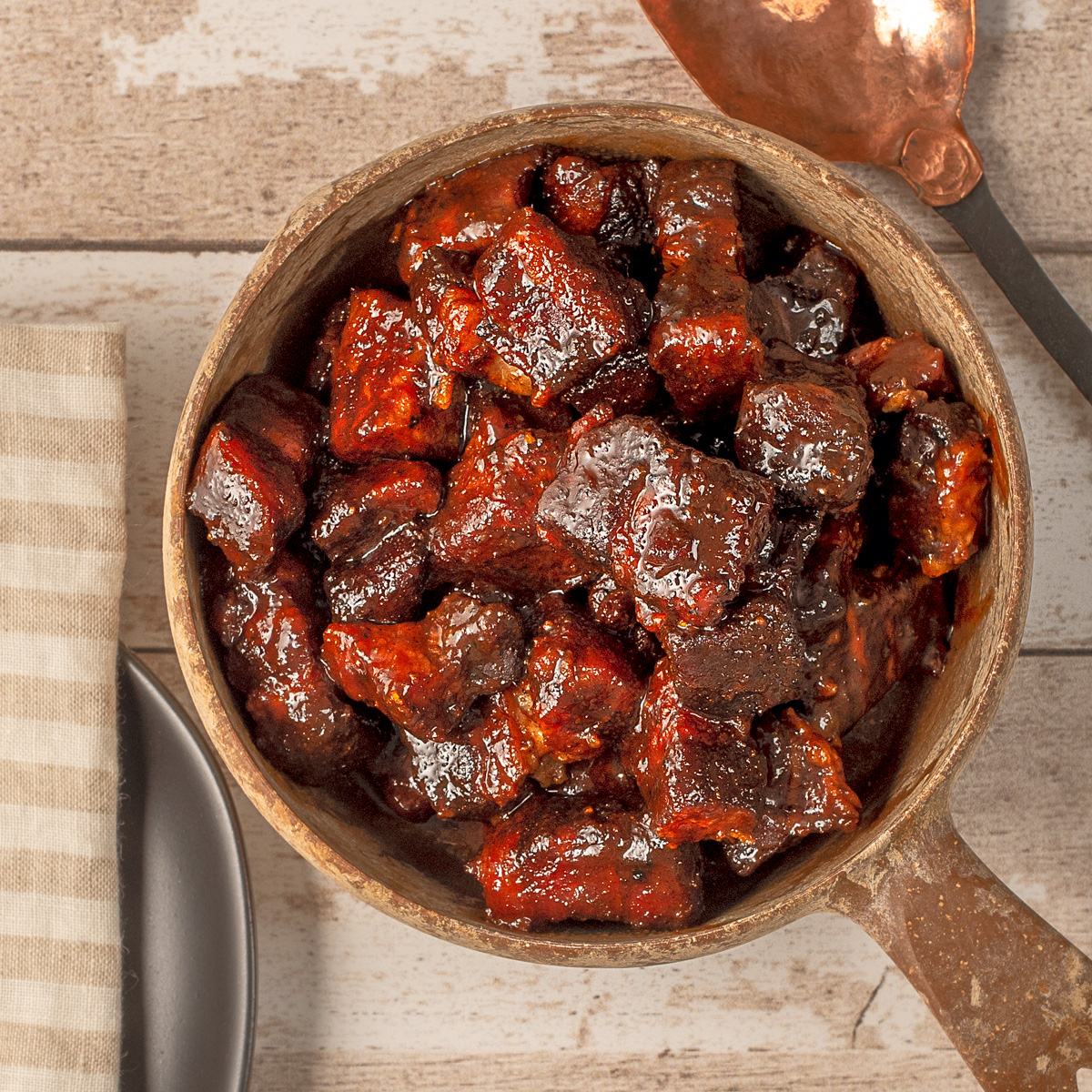

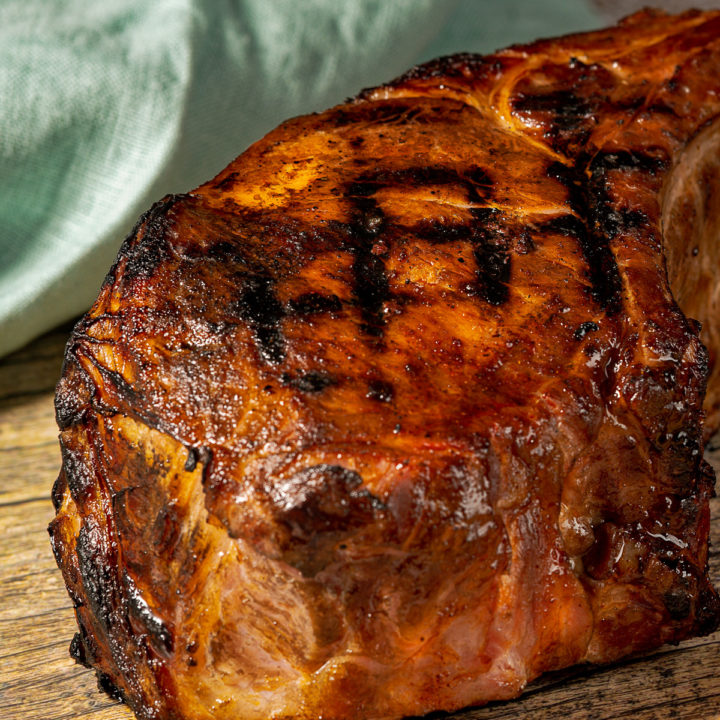
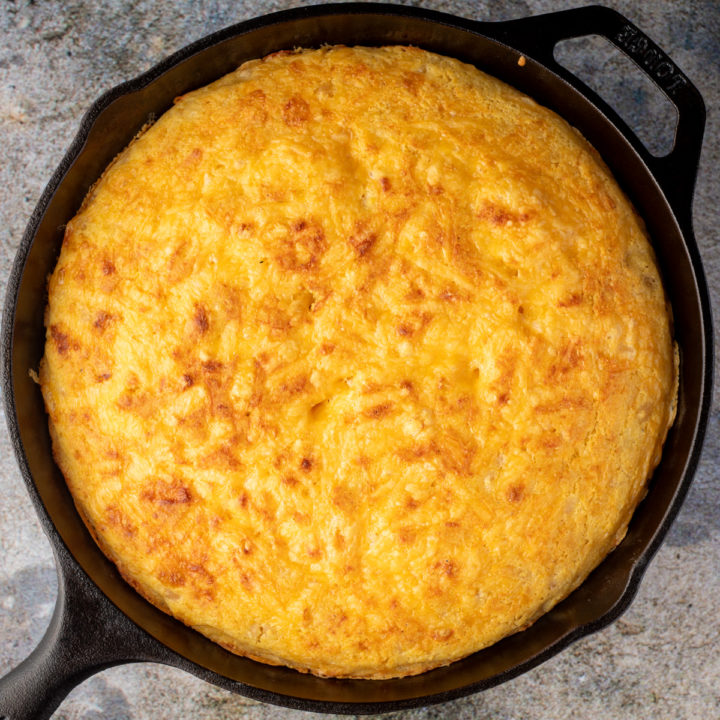

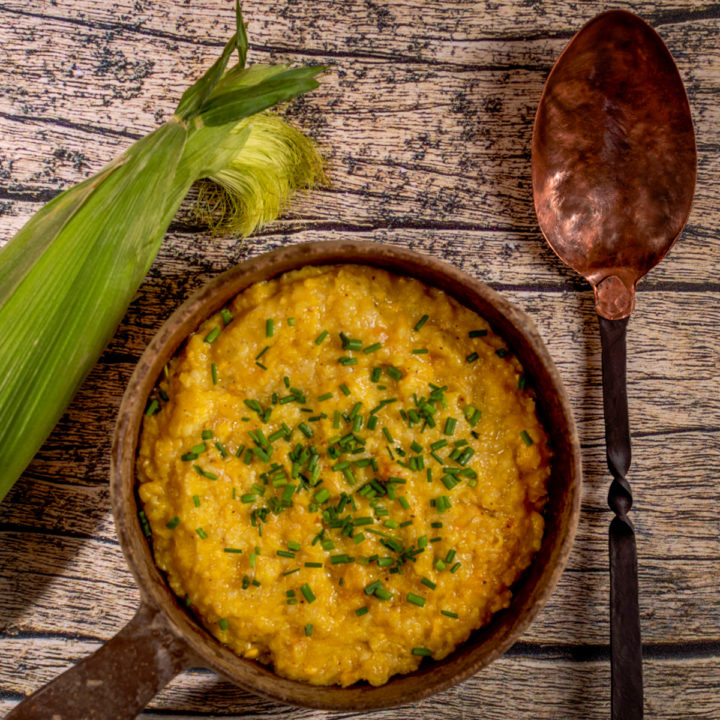
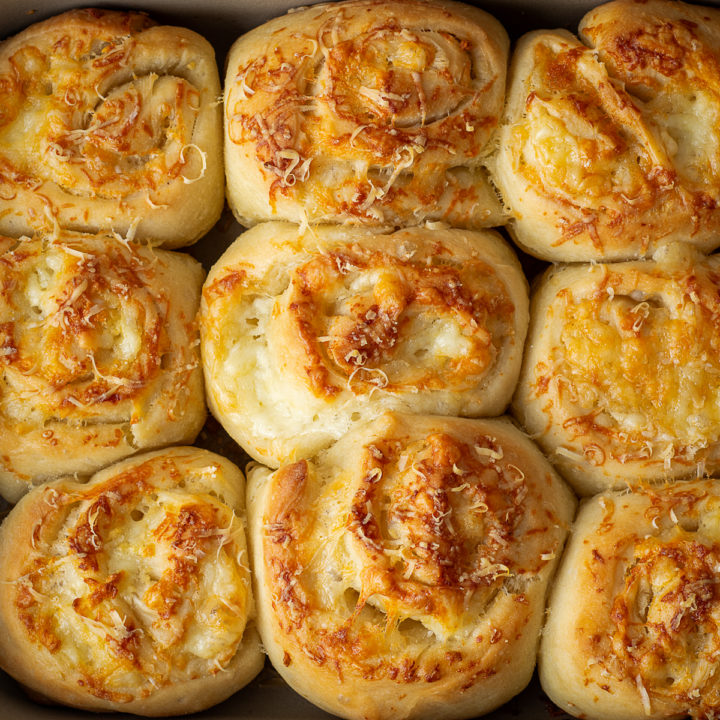

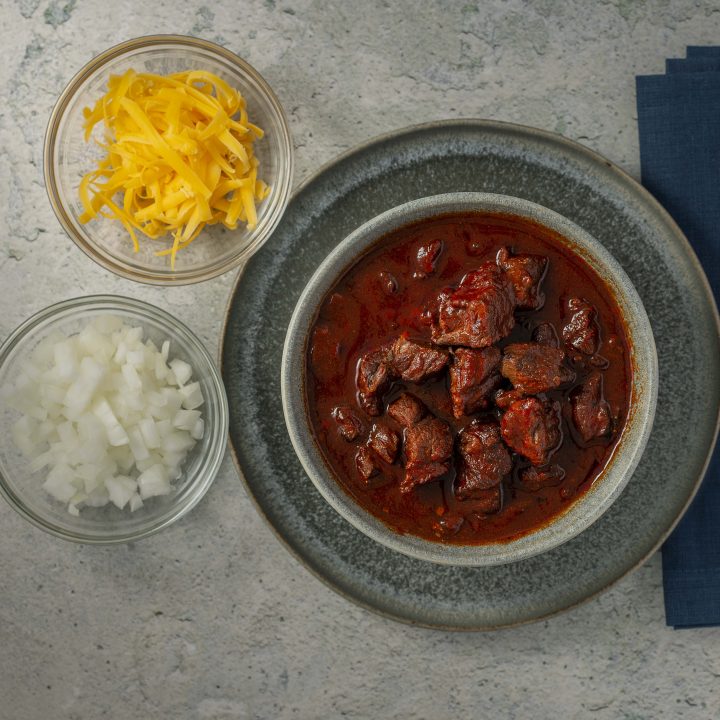
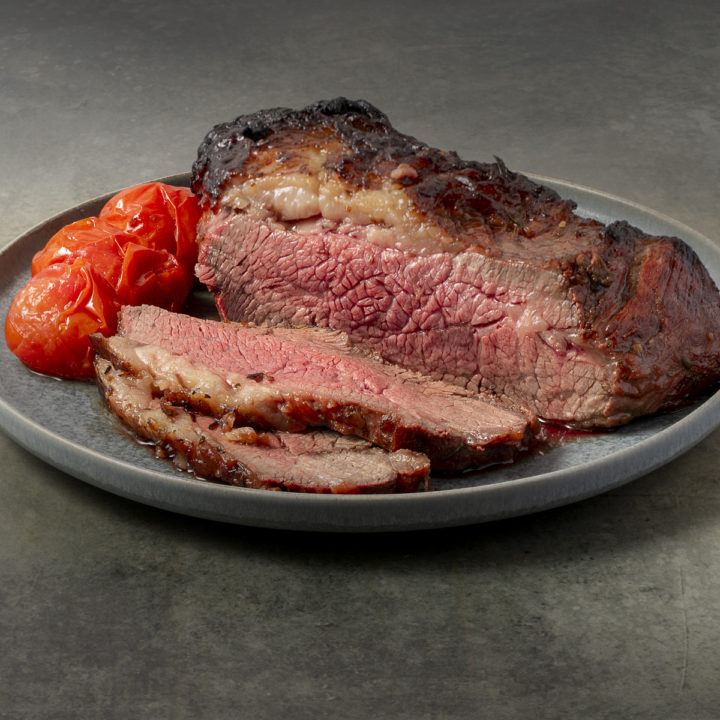
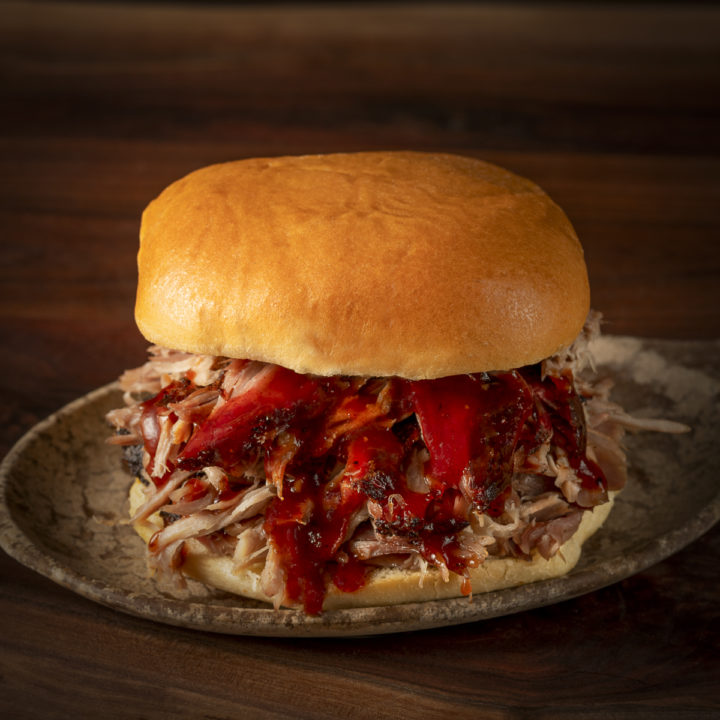
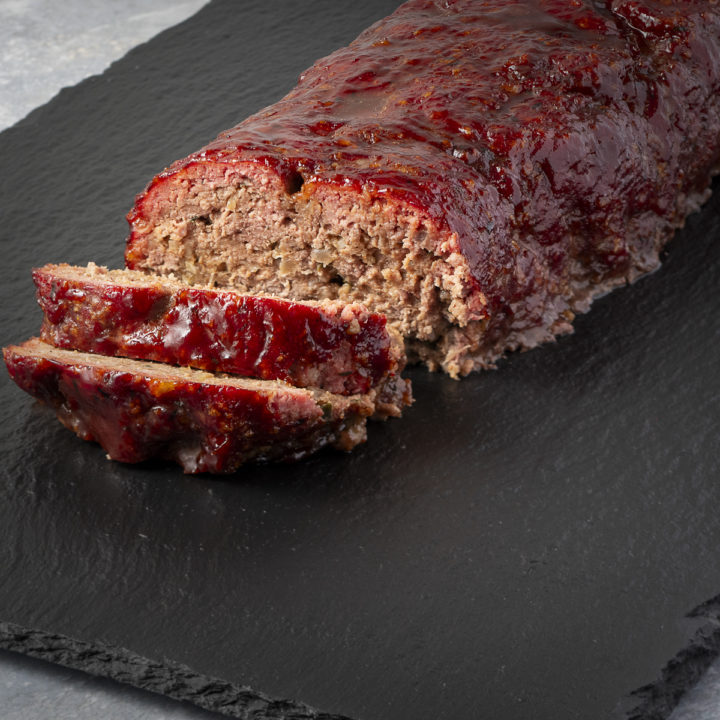
Leave a Reply